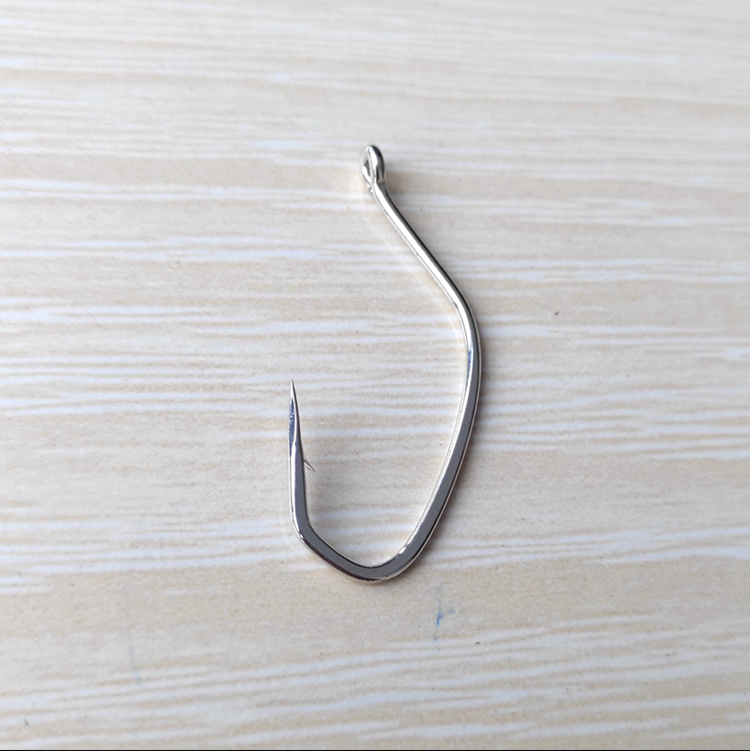Striped bass fishing demands precision, especially in pressured waters where finesse techniques reign supreme. Among the most critical yet underappreciated tools in an angler’s arsenal are light wire hooks. Designed for subtle presentations and rapid hooksets, these hooks are increasingly vital for balancing angling success with conservation efforts. This guide explores their role in modern striped bass fishing, regulatory considerations, and best practices for maximizing performance while minimizing environmental impact.

Why Light Wire Hooks Matter in Finesse Fishing
Light wire hooks are engineered for scenarios requiring delicacy and responsiveness. Their thinner gauge reduces weight, allowing baits like soft plastics or live worms to move naturally—a key factor when targeting wary striped bass in clear or shallow waters. Unlike heavywire hooks, which can overpower finesse rigs and alter bait action, light wire variants maintain the lifelike movement that triggers strikes in finicky fish.
Studies show that light wire hooks also reduce mortality in catchandrelease scenarios. Their design minimizes tissue damage during hook removal, particularly when paired with barbless modifications. This aligns with growing regulations aimed at preserving striped bass populations, which face pressure from overfishing and habitat changes.
Regulatory Considerations: Balancing Technique and Compliance
Recent regulations emphasize the use of nonoffset circle hooks when fishing with natural bait for striped bass. While light wire hooks aren’t explicitly mandated, their compatibility with circle hook designs makes them a strategic choice. For instance, inline circle hooks—required in states like Connecticut and New Jersey—feature a perpendicular point that reduces guthooking. Light wire versions of these hooks enhance penetration without sacrificing strength, ensuring compliance while improving hookup rates.
Anglers must also navigate rules around incidental catches. If using noncircle hooks while targeting other species, any striped bass caught must be released immediately. Light wire hooks simplify this process by causing less harm, reducing the risk of penalties and supporting conservation goals.
Choosing the Right Light Wire Hook
Selecting the optimal hook involves balancing size, wire gauge, and bait type:
1. Hook Size: Match the hook to your bait. For 4–5″ finesse worms or small live baits, sizes 1/0–3/0 are ideal. Oversized hooks can impede bait movement, while undersized ones may fail to secure larger fish.
2. Wire Gauge: Light wire hooks excel in finesse applications but require careful line pairing. Use 8–12 lb test lines to avoid bending or breaking the hook during fights. Heavier lines risk overpowering the hook’s structure.
3. Design Features: Opt for hooks with chemically sharpened points for quicker penetration. Enclosed line eyes prevent slippage with braided lines, and microbarbs (or barbless options) ease hook removal.

Techniques for Maximizing Light Wire Hook Performance
Let the Rod Do the Work: Light wire hooks pair best with moderateaction rods. Avoid aggressive hooksets, which can straighten the hook. Instead, rely on steady pressure to allow the hook to selfset.
Bait Rigging: Keep the hook gap unobstructed. For Texasrigged worms, thread the bait to expose the point slightly. When nosehooking live bait, ensure the hook sits flush to prevent spinning.
PostCatch Care: Minimize air exposure by keeping fish in the water during unhooking. Use wet gloves to protect their slime coat, and revive exhausted fish by cradling them upright until they swim away strongly.
The Science Behind Light Wire Hooks and Conservation
Research underscores the ecological benefits of light wire hooks. A 2023 study by the Atlantic States Marine Fisheries Commission (ASMFC) found that circle hooks reduced deephooking incidents by 60%, with light wire variants further lowering mortality rates due to quicker hook removal. Historical data from Chesapeake Bay fisheries also highlights how lighter gear contributes to stabilized striped bass populations, proving that finesse tactics and sustainability go hand in hand.
Adapting to Seasonal and Environmental Factors
Striped bass behavior shifts with water temperature and clarity, demanding adaptability:
Cold Water: In early spring or late fall, downsizing to light wire hooks with smaller baits (e.g., 3″ shad imitations) can entice sluggish fish.
Warm Water: During summer, prioritize quick releases to reduce stress. Light wire hooks paired with fastsinking weights help reach deeper, cooler zones where bass congregate.
Tidal Currents: In strong currents, opt for slightly heavier wire to maintain bait placement while retaining finesse benefits.
Conclusion: Embracing Innovation for Future Fisheries
The shift toward light wire hooks reflects a broader trend in angling: blending tradition with innovation to address ecological challenges. By adopting these hooks, anglers not only enhance their success but also contribute to the recovery of striped bass stocks. As regulations evolve—such as upcoming closures in critical spawning rivers—staying informed and adaptable ensures both compliance and continued access to thriving fisheries.

For those new to finesse fishing, start with versatile 2/0 light wire circle hooks and practice techniques in calm waters. Over time, this approach will refine your skills while safeguarding the species we cherish.
*Always verify local regulations before your trip, as requirements may vary by region and season. For detailed guidelines, consult your state’s wildlife agency or fisheries department.*